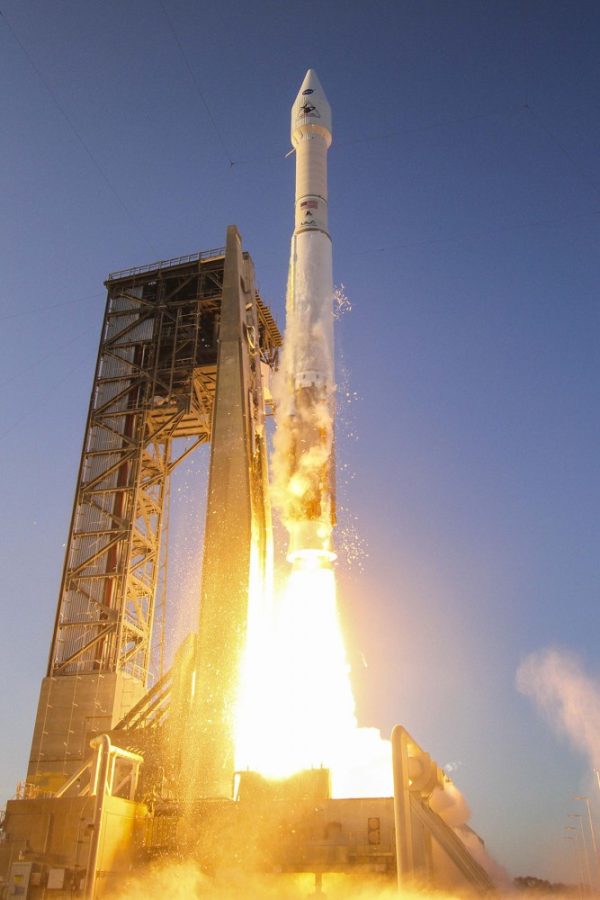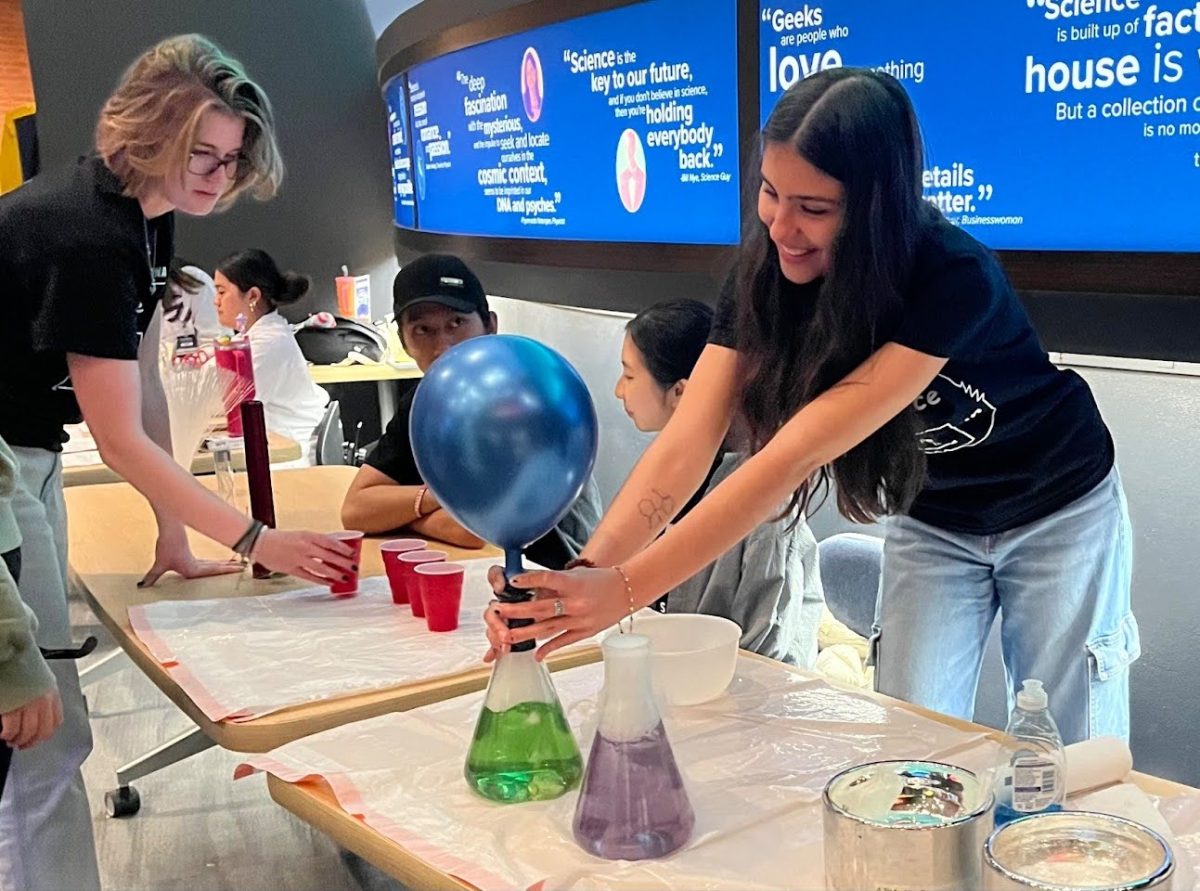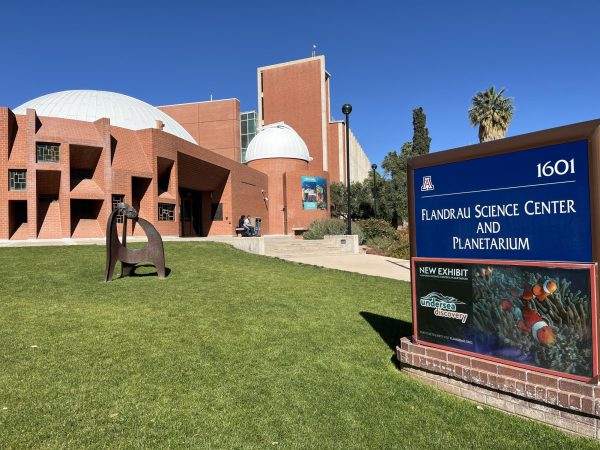On Sept. 24, the spacecraft from the University of Arizona Lunar and Planetary Laboratory-led OSIRIS-REx NASA mission, that has successfully collected a sample of the asteroid Bennu, dropped the return capsule in the Utah desert. On Oct. 11, NASA revealed the OSIRIS-REx sample to the public in a livestream from the Johnson Space Center in Houston, Texas.
Scientists plan to use the sample data from this potentially hazardous asteroid to gain insight into our solar system, as the organic material on this asteroid could give clues to the origins of life on Earth, and in this respect, NASA Administrator Bill Nelson revealed that the sample exceeded NASA’s expectations.
“The first analysis shows samples that contain abundant water in the form of hydrated clay minerals, and they contain carbon…at nearly 5% carbon by weight,” Nelson said, “The carbon and water molecules are exactly the kind of materials that we wanted to find, they are crucial elements in the formation of our own planet, and they are going to help us determine the origin of the elements that could have led to life.”
According to Daniel Gladden, an OSIRIS-REx sample analyst, the exact carbon measurement found by the Carnegie Institution for Science was 4.7%. This is the highest abundance of carbon from an extraterrestrial sample the institution has ever measured.
Dante Lauretta, the mission’s principal investigator and regents’ professor of planetary science at UA, explained some of the mission’s current findings at the Oct. 11 NASA event. Lauretta fixated on how the findings could present key insight about the building blocks of life on earth.
““The first panel[…t]hose are the water-bearing clay minerals[…]and they have water locked inside their crystal structure[…]that is how we think water got to the earth, the reason that earth is an inhabitable world, that we have oceans and lakes and rivers and rain, is because these clay minerals like the ones we’re seeing from Bennu landed on earth 4-4.5 billion years ago,” Lauretta said. “So we’re seeing the way that water got incorporated into a solid material and ultimately into planets, and not just Earth, but probably Venus and Mars.”
Researchers in the Johnson Space Center curation lab are currently “carefully and meticulously disassembling the hardware,” according to Francis McCubbin, a NASA astromaterials curator. This group of researchers is preparing samples to distribute to a sample analysis team that includes over 230 scientists from around the world.
The OSIRIS-REx mission is the first U.S. mission to collect a sample from an asteroid, and Gladden called the asteroid selection and sample “an astrobiologist’s dream.”
“We ultimately selected it for the target of the sample return mission because it’s a very rare type of asteroid in the inner solar system. It’s really dark […] and that darkness is related to carbon,” said Lauretta. “The minerals and the chemicals formed over four and a half billion years ago. Therefore [the carbonaceous-type asteroids] existed before Earth was a planet.”
Scientists believe this carbonaceous-type asteroid is one of the most abundant types in the solar system and one of the least well-understood.
“Think of this as the unprocessed building blocks of the planets,” said Andrew Ryan, a research scientist at UA and co-investigator on the mission. “They haven’t been heated or melted very thoroughly. So it’s really pristine, original material.”
Because asteroids like Bennu have been relatively unchanged since the solar system’s beginning, there is a need to study them. There is nothing on Earth that has been preserved since our planet’s formation because of the active geologic processes happening on the surface, said Anjani Polit, mission implementation systems engineer for the OSIRIS-REx mission.
There is also a chance that Bennu could hit Earth because it is a near-Earth asteroid that orbits the sun at about the same distance as the Earth’s orbit, Ryan said.
According to the OSIRIX-REx website, “Bennu is also one of the most potentially hazardous asteroids, as it has a relatively high probability of impacting the Earth late in the 22nd century.”
According to Lauretta, the study will develop scientists’ understanding of the solar system evolution as well as planetary defense strategies; it will be easier for scientists to characterize asteroids that might hit Earth.
In May 2011, the OSIRIS-REx mission was selected for flight. Researchers involved with the mission were dedicated to designing and testing before the spacecraft launched in 2016 and arrived at Bennu two years later. They mapped and announced the location for sampling in 2019 and then collected the sample in 2020, Lauretta said.
The gravity on Bennu is what scientists would describe as a microgravity environment. Bennu is the smallest object ever orbited, and the orbit of OSIRIS-REx around it was the closest orbit ever, Polit said.
Once the spacecraft reached Bennu, Lauretta and the OSIRIS-REx team faced unforeseen challenges and obstacles.
Before the team launched to Bennu’s surface, they analyzed data from their telescopes and estimated that the surface contained sand-like particles that would be easy to collect. Once they reached the surface, they discovered the terrain had rugged rocks and boulders.
What the scientists found was that the boulders themselves were fractured and porous. They realized that when a boulder has many holes, its low density causes behavior in the thermal data similar to the thermal signature of the pebbles that the team expected there to be on the surface, Ryan said.
“Before we got there, we just hadn’t considered that scenario,” Ryan said.
The team had to send new code to the spacecraft so it could navigate more efficiently where it could land, according to Lauretta. When they finally found a safe spot for the spacecraft to obtain the fine-grain material they hoped to get, the spacecraft touched a surface akin to liquid.
“It was like hitting a pool of water, and we just sunk in,” Lauretta said. “We just went all the way into the subsurface of the asteroid […] and finally the spacecraft timed out and said okay, fire thrusters and back away. I honestly believe if we had not done that, the spacecraft would have just disappeared into the asteroid and we never would have heard from it again.”
Despite these complications, the OSIRIS-REx team emerged with a successful and bountiful sample collection. When scientists at the Johnson Space Center first opened the canister, they were even surprised by extra asteroid material covering the sample collector, offering further opportunities for study.
Going forward, NASA’s curation team is working on creating a sample catalog “which will give scientists from all around enough information to start to think about what science questions they want to ask, and they can propose studies and specific quantities of samples they would like to use,” according to Nicole Lunning, the OSIRIS-REx lead curator. A peer review allocation board will then review these requests and, in approximately nine months, the approved researchers will receive samples.
From laboratories on the UA campus to the next mission for this OSIRIS-REx spacecraft, there is a promising future for the next generation of young astronomical scientists who want to get involved in this discovery.
“You really get to see the impact that you have on these young people and watch them grow into these leaders and then continue that legacy [into] the future,” Lauretta said.
Follow the Daily Wildcat on Instagram and Twitter (X)









